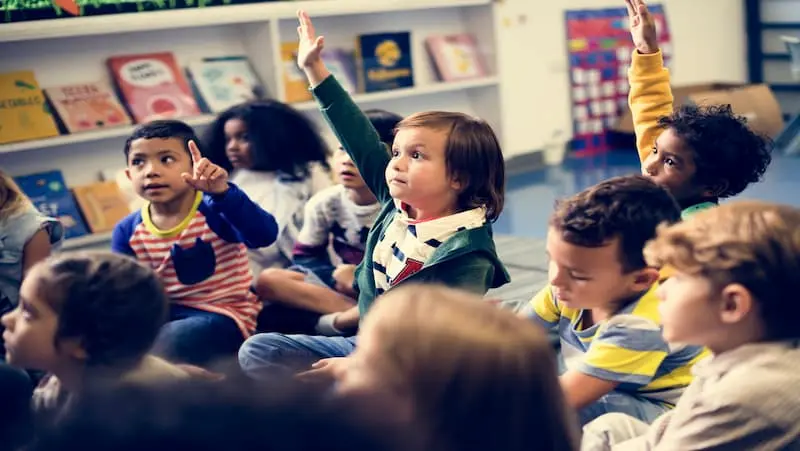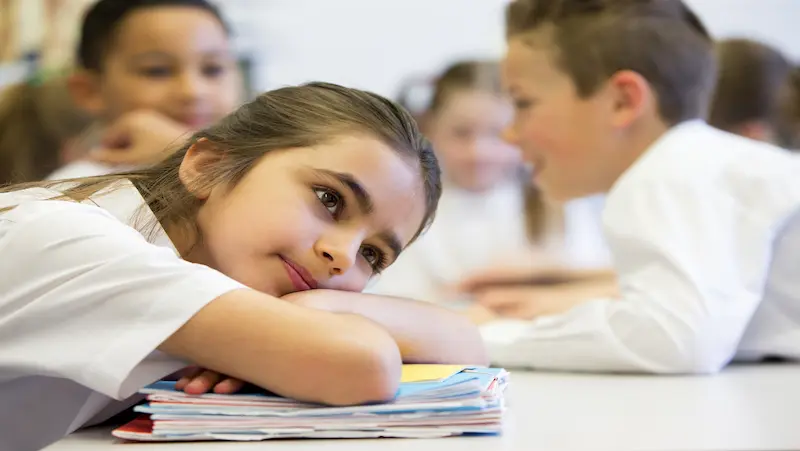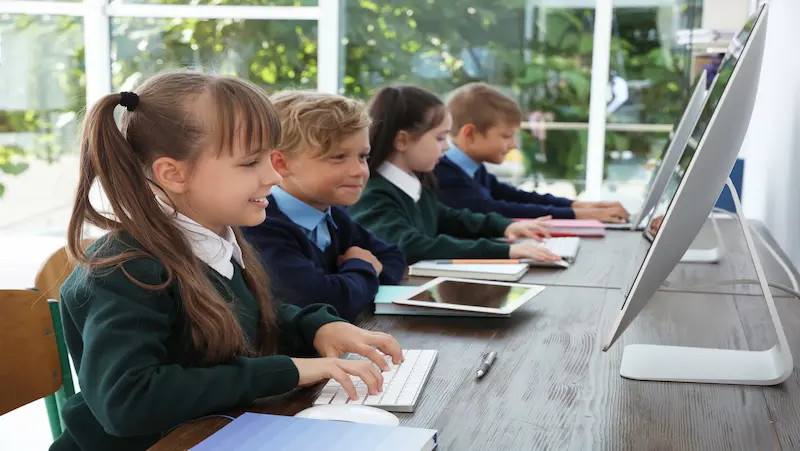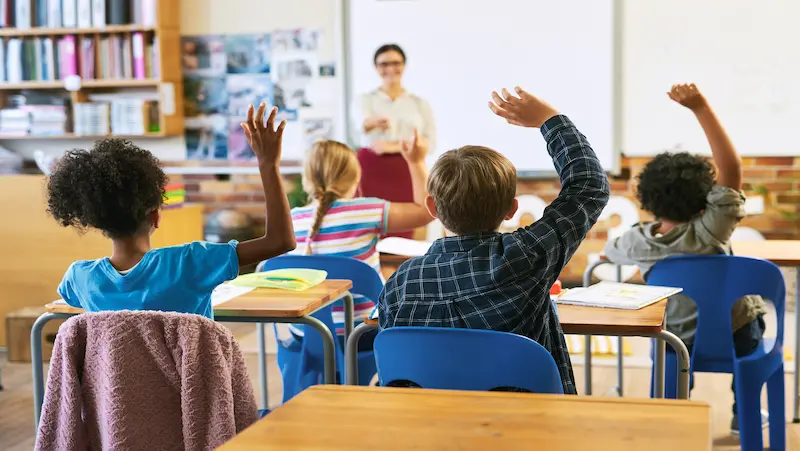Traditional schooling for kids has been the backbone of education for generations, providing a structured and comprehensive approach to learning that equips children with essential academic skills and social development. In this environment of classrooms, teachers, and textbooks, students not only acquire foundational knowledge but also cultivate valuable life skills that prepare them for a promising future.
Traditional schooling remains a popular choice among parents for its time-tested methods and established academic curriculum, providing a strong foundation for student’s future success.

Table of contents
Definition of Traditional Schools
A traditional school for kids refers to an educational institution that follows conventional teaching methods, practices, and curriculum. These schools often emphasize structured classroom settings, teacher-led instruction, and a focus on core subjects such as mathematics, science, language arts, and social studies. Traditional schools typically maintain a fixed schedule, standardized grading systems, and regular assessments to measure students’ progress. Encouraging good behavior is an essential aspect of traditional schooling.
In the context of a conventional school environment, students are encouraged to acquire knowledge through lectures, textbooks, and written tasks. The focus often lies on memorization and repetitive learning methods. Furthermore, traditional schools may implement rules for discipline and enforce uniform policies to ensure a structured and orderly atmosphere among students.
The Core Components of Traditional Schools
Traditional schools are characterized by several core components that form the foundation of their educational approach. These components have been fundamental to the functioning of traditional education for kids over the years.
- Teacher-Led Instruction: In traditional schools, teachers play a central role, leading classroom instruction, imparting knowledge, and serving as essential sources of information and inspiration for students.
- Curriculum and Textbooks: In traditional schools, a fixed curriculum covers core subjects, using textbooks for presenting content and emphasizing student study and memorization.
- Lectures and Classroom Learning: In traditional classrooms, teachers commonly use lectures to deliver information, employing verbal explanations to enhance understanding and encourage student note-taking.
- Memorization and Rote Learning: Traditional schools often prioritize memorization and rote learning, expecting students to memorize facts, formulas, and key concepts to demonstrate understanding and recall in assessments. It can also influence child development.
- Discipline and Uniformity: In traditional schools, disciplinary rules and uniform policies are implemented to ensure order and create a focused learning environment for students’ academic growth.
- Standardized Assessments: Traditional schools use standardized tests and assessments to evaluate student’s knowledge, progress, and individual performance, facilitating comparisons of students’ achievements.
- Fixed Timetables and Schedules: Traditional schools typically follow fixed timetables and schedules, ensuring a structured daily routine for students. This consistency helps students adapt to a regular learning pattern.
Classroom Setting and Teacher-Student Ratio

In a traditional school setting for kids, the classroom is a physical space where students gather to receive instruction from a teacher. This type of setting is common in most educational institutions, ranging from elementary schools to high schools.
The teacher-student ratio refers to the number of students assigned to each teacher in a particular classroom. For example, if a classroom has 30 students and one teacher, the teacher-student ratio is 1:30.
Classroom setting and teacher-student ratio impact learning outcomes. Schools strive to balance them for effective learning, engagement, and personalized support.
Advantages of Traditional Schools
Traditional schools for kids offer several advantages:
1. Established Structure: Traditional schools offer a stable and predictable learning environment with clearly defined schedules, routines, and curriculum.
2. Face-to-Face Interaction: In traditional schools, students engage in face-to-face interactions with teachers and peers, which helps nurture social skills, communication abilities, and teamwork.
3. Classroom Discipline: Traditional schools typically maintain discipline, creating a focused and orderly learning environment that improves students’ concentration abilities. It helps to maintain positive discipline strategies.
4. Access to Resources: In traditional schools, students usually have access to a diverse range of educational resources, such as libraries, laboratories, and extracurricular activities.
5. Sense of Community: Students build a sense of belonging and camaraderie with their peers, teachers, and staff, enhancing their overall school experience.
6. Experienced Teachers: In traditional schools, experienced teachers are commonly employed, possessing expertise in their subject areas and teaching methodologies.
7. Parental Involvement: Traditional schools frequently promote parental involvement in their children’s education, fostering a robust partnership between parents and teachers. Parent involvement in education is highly valued and actively encouraged in traditional schooling.
Challenges of traditional school systems for kids

Traditional school systems for kids face several challenges that can impact the overall effectiveness of education. Some of the key challenges include:
1. One-size-fits-all approach: Traditional school’s standardized curriculum and teaching methods often neglect individual learning styles and pace, leaving some students feeling left behind or unchallenged, impacting their overall development.
2. Rote memorization over understanding: Focusing on memorization instead of deep understanding hampers critical thinking and creativity, as students may memorize facts for exams without grasping the concepts, limiting the real-life application of knowledge.
3. Lack of practical life skills: Traditional education often focuses heavily on academic subjects, leaving little room for teaching practical life skills, such as financial literacy, emotional intelligence, and problem-solving abilities.
4. Limited emphasis on creativity and arts: Traditional schools often undervalue artistic expression and creative thinking, resulting in limited opportunities for students to explore and nurture their creative talents.
5. Limited teacher-student interaction: Large class sizes and time constraints can impede teachers’ ability to provide individual attention to students, potentially impacting their academic progress and emotional development.
The Role of Technology in Traditional Schools

Technology plays an increasingly important role in traditional schools, transforming the way education is delivered and received. When used judiciously and with a student-centered approach, technology can enrich classroom instruction, foster personalized learning, and prepare students for a rapidly evolving digital world. Some roles are listed below:
- Enriching Classroom Instruction: Technology serves as a valuable tool for educators, enabling dynamic classroom instruction through interactive whiteboards, digital projectors, and educational software that fosters active student engagement and better retention of information.
- Personalised Learning: Technology in traditional schools allows for personalized learning through Learning Management Systems (LMS) and adaptive learning platforms, enabling educators to tailor lesson plans to meet individual students’ needs and pace, fostering inclusivity and effective learning. Encouraging positive thinking for kids can be effectively fostered through personalized learning approaches.
- Access to a Vast Pool of Information: The internet provides a vast pool of knowledge accessible to students and educators through online databases, e-books, and academic journals, fostering critical thinking and self-directed learning by exploring diverse perspectives.
The Impact of Traditional Schools on Students
Traditional schools have been the cornerstone of education for generations, shaping the minds of countless students worldwide. These institutions follow established norms, practices, and curricula that have evolved. While traditional schools offer a structured learning environment, it is essential to examine the impact they have on student’s academic, social, and personal development. Teaching kids responsibility is an integral part of the values instilled in traditional schooling.
Traditional schools provide a well-established academic foundation, ensuring students are exposed to essential subjects such as mathematics, science, language arts, and social studies. The structured curriculum and standardized testing help maintain consistent learning standards, preparing students for further education and future career paths.
Conclusion
In conclusion, traditional schools for kids have been an integral part of education systems for generations. They have provided a structured and standardized approach to learning, facilitating the development of essential academic skills and social interactions. The traditional school model offers benefits such as face-to-face teacher-student interaction, a well-defined curriculum, and a sense of community within the school environment.
Join the revolution in education with Brightchamps. Our courses in robotics, coding, and financial literacy empower kids to become confident and capable learners.
Frequently Asked Questions (FAQs)
A. Traditional schools may not be equally suitable for all types of learners. Some students thrive in the structured environment and benefit from traditional teaching methods.
A. Parental involvement is a critical factor in a child’s academic success in traditional schools. Studies have shown that when parents actively engage in their child’s education by monitoring progress, supporting homework, attending school events, and communicating with teachers, students tend to perform better academically.
A. Yes, some traditional schools have successfully integrated technology into their classrooms to enhance learning experiences. These schools leverage digital tools and resources to supplement traditional teaching methods, making lessons more interactive and engaging.
A. Traditional schools may not be equally suitable for all types of learners. Some students thrive in the structured environment and benefit from traditional teaching methods.
A. To meet the needs of diverse students, traditional schools can adopt various strategies. Implementing differentiated instruction, where teachers tailor their teaching methods to accommodate different learning styles, can be beneficial.
A. Standardised testing is used to assess students’ academic performance and compare them to their peers on a standardized scale.


 We are an army of educators and passionate learners from BrightChamps family, committed to providing free learning resources to kids, parents & students.
We are an army of educators and passionate learners from BrightChamps family, committed to providing free learning resources to kids, parents & students.













